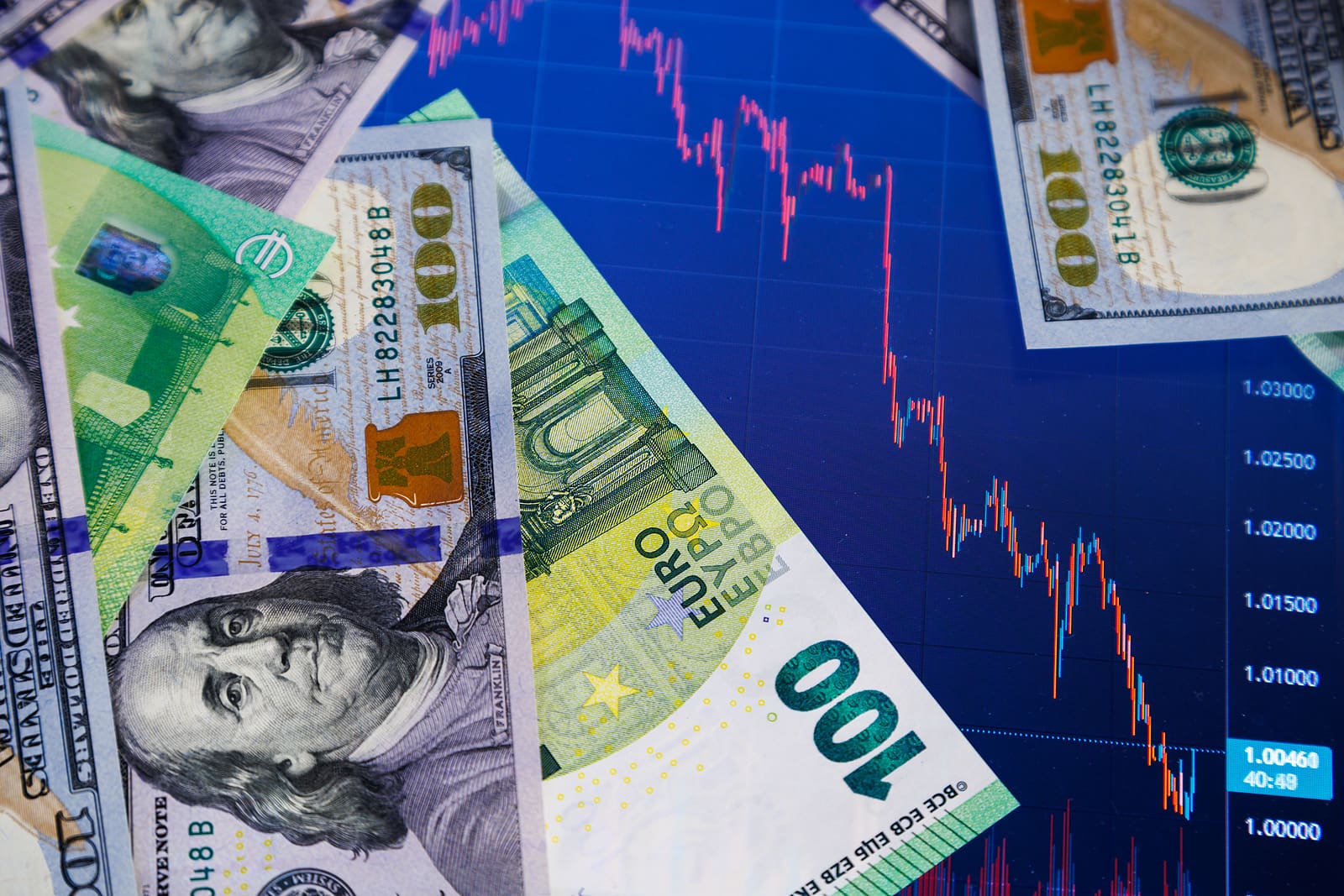Understanding the US Dollar Index (USDX) and How Monitoring It Can Help You Buy Stocks
ST. LOUIS, MO (STL.News) US Dollar Index – The financial markets are complete of moving parts—interest rates, corporate earnings, commodity prices, geopolitical events, and economic data all influence the direction of stocks. Among these factors, one critical but often overlooked indicator is the US Dollar Index (USDX). Many casual investors either don’t know what it is or underestimate its importance. Yet, for traders and sophisticated investors, the US Dollar Index can be a powerful tool in determining when to buy stocks, which sectors to favor, and how to manage risk.
In this comprehensive guide, we’ll explore:
- What the US Dollar Index is, and how it’s calculated
- Why the dollar’s strength or weakness matters to the stock market
- Historical relationships between the USDX and stock market performance
- Practical strategies for using USDX trends to guide stock purchases
- Limitations and risks of relying solely on currency indicators
1. What Is the US Dollar Index?
The US Dollar Index is a measure of the value of the US dollar relative to a basket of major foreign currencies. It was introduced in 1973 by the Intercontinental Exchange (ICE) and has become one of the most widely watched barometers of the dollar’s global strength.
The USDX measures the dollar against six key currencies:
- Euro (EUR) – 57.6% weight
- Japanese Yen (JPY) – 13.6% weight
- British Pound Sterling (GBP) – 11.9% weight
- Canadian Dollar (CAD) – 9.1% weight
- Swedish Krona (SEK) – 4.2% weight
- Swiss Franc (CHF) – 3.6% weight
The index starts at a base value of 100. If the USDX is above 100, the dollar has strengthened relative to the 1973 baseline; if it’s below 100, the dollar has weakened.
Formula
The calculation is based on the geometric mean of the exchange rates between the U.S. dollar and the basket of currencies. This allows the USDX to reflect an aggregated measure of the dollar’s purchasing power worldwide.
2. Why the Dollar’s Strength or Weakness Matters for Stocks
The US dollar is the world’s primary reserve currency and plays a central role in global trade, commodity pricing, and capital flows. When its value changes significantly, it can impact multiple areas of the economy and financial markets.
A. Strong Dollar Effects
When the USDX is rising (the dollar is strengthening):
- Imports become cheaper – U.S. consumers and businesses benefit from lower prices on foreign goods.
- Exports become less competitive – U.S. companies selling abroad may see reduced revenues because foreign buyers must pay more in local currency.
- Commodities tend to fall – Oil, gold, and other commodities priced in dollars often drop as the dollar strengthens.
- Foreign investment outflows – A strong dollar can attract foreign capital into U.S. assets, but it can also make U.S. multinational earnings look weaker when converted from foreign currencies.
B. Weak Dollar Effects
When the USDX is falling (the dollar is weakening):
- Exports become cheaper – U.S. goods become more competitive in the global market.
- Imports become more expensive – This can lead to inflationary pressures in the U.S.
- Commodities tend to rise – A weaker dollar usually supports higher commodity prices.
- Boost for multinational earnings – Revenues earned abroad translate into more dollars, improving earnings for global U.S. corporations.
In short, the dollar’s direction affects sector performance, commodity prices, and overall market sentiment—all crucial for deciding when and what stocks to buy.
3. Historical Relationships Between the US Dollar Index (USDX) and Stock Market Performance
The relationship between the US Dollar Index and stocks is not always perfectly inverse, but certain patterns have held true historically.
1980s–1990s: Strong Dollar and Selective Market Gains
During the mid-1980s, the dollar soared to record highs. Export-heavy industries suffered, but domestic-oriented companies thrived. Retail and service companies experienced strong growth, thanks to cheaper imports and robust consumer spending.
2002–2008: Weak Dollar, Commodity Boom
The USDX trended downward from 2002 to 2008. This period coincided with a historic commodity rally, as oil prices surged, gold hit record highs, and emerging markets performed well. U.S. exporters and commodity-linked companies enjoyed strong gains.
2014–2016: Dollar Surge and Earnings Pressure
A rapid dollar rally in 2014 hurt U.S. multinational companies. Earnings reports showed that currency headwinds shaved billions off corporate revenues. The S&P 500 experienced increased volatility as investors shifted away from globally dependent sectors, such as technology and industrials.
2020–2022: Pandemic Volatility
The dollar weakened sharply in 2020 amid aggressive Federal Reserve stimulus, boosting commodities and tech stocks. However, by late 2021 and into 2022, as the Fed raised interest rates to combat inflation, the dollar surged, exerting pressure on global earnings and commodity prices.
4. How Monitoring the US Dollar Index (USDX) Can Help You Buy Stocks
For investors, tracking the US Dollar Index can provide early clues about sector rotations, market sentiment, and macroeconomic conditions.
A. Identifying Sector Opportunities
- When the USDX rises (a strong dollar): Favor domestic companies with minimal international exposure. Consider sectors like utilities, regional banks, retail, and U.S.-based service companies.
- When the USDX falls (a weak dollar): Favor exporters, commodity producers, industrials, and multinational tech firms that benefit from increased foreign revenue.
B. Timing Commodity-Related Stocks
Because commodities like oil, gold, and copper are priced in dollars, a weaker USDX generally pushes their prices higher, benefiting energy and mining companies. Conversely, a strong dollar can weigh on these sectors.
C. Correlation with Emerging Markets
Emerging market equities often move inversely to the USDX. When the dollar weakens, emerging markets can outperform due to easier debt servicing (many have dollar-denominated debt) and increased capital inflows.
D. Using the US Dollar Index (USDX) in Conjunction with Other Indicators
While the USDX can give valuable insights, it’s most effective when paired with:
- Interest rate trends (Federal Reserve policy)
- Inflation data
- Earnings reports
- Technical stock market indicators like moving averages and the relative strength index (RSI)
E. Practical Steps
- Set Alerts – Use trading platforms to set alerts when the USDX crosses certain thresholds (e.g., above 105 or below 95).
- Compare Historical Charts – Overlay the USDX with the S&P 500 or specific sector ETFs to spot patterns.
- Align with Earnings Seasons – Consider how a rising or falling dollar might impact upcoming earnings reports, particularly for multinational corporations.
5. Limitations and Risks
While the US Dollar Index is valuable, relying on it alone can be risky.
- Lagging Indicator: Sometimes the USDX moves after the stock market reacts to other catalysts.
- Complex Global Interactions: Other currencies not in the USDX basket, like the Chinese yuan or Mexican peso, can still influence certain sectors.
- Overemphasis on Correlation: The USDX-stock relationship is not a guaranteed inverse correlation; exceptions occur based on unique macroeconomic conditions.
- Short-Term Noise: Day-to-day fluctuations in the USDX might not reflect meaningful long-term trends.
Conclusion
The US Dollar Index is far more than a currency gauge—it’s a macroeconomic signal that can help investors time stock purchases, select sectors, and manage portfolio risk. A rising dollar often benefits domestic sectors and pressures exporters, while a weakening dollar can lift commodity prices, boost multinational earnings, and favor emerging markets.
By incorporating USDX analysis into your investment process, you gain a broader, more global perspective on market dynamics. While it shouldn’t replace fundamental company research or other macro indicators, it’s a tool that can provide strategic clarity—especially in volatile or uncertain markets.
If you found this post helpful, please consider reading “How to Invest in the US Dollar Index: A Comprehensive Guide.”
Disclaimer: This article is for informational purposes only and does not constitute investment advice. Always consult with a qualified financial advisor before making investment decisions.
© 2025 STL.News/St. Louis Media, LLC. All Rights Reserved. Content may not be republished or redistributed without express written approval. Portions or all of our content may have been created with the assistance of AI technologies, like Gemini or ChatGPT, and are reviewed by our human editorial team. For the latest news, head to STL.News.











